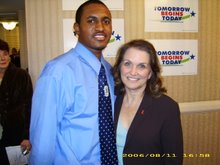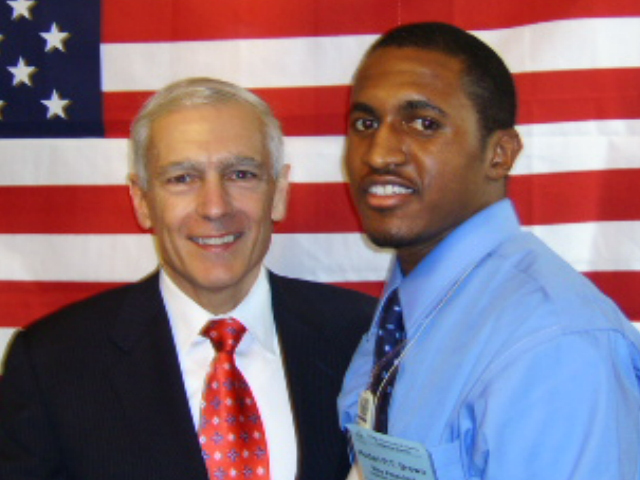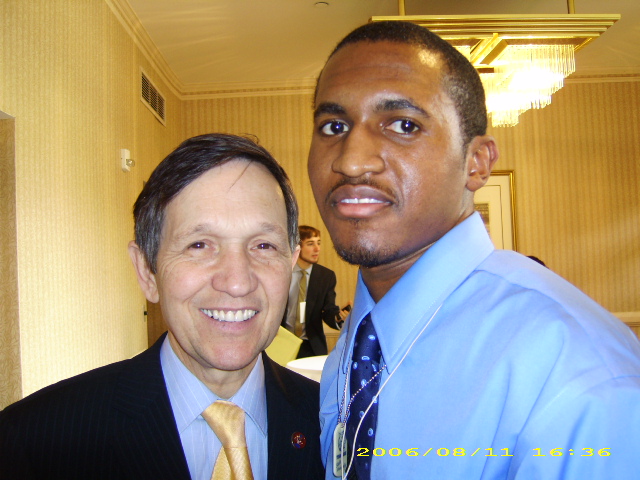
As she prepares to step out beyond her role as the self-described “mom in chief,” Michelle Obama has been busy behind the scenes crafting a policy-driven agenda that will bring working-family issues into the White House — and she’s surrounded herself with a team of veteran political insiders and seasoned policy advocates to do it.
Aides are quick to say the first lady isn’t planning on having an independent policy power center in the East Wing. “Our job is to think through with the president and with the president’s team and assist in dialogue about policy. But the president is the policymaker,” said chief of staff Jackie Norris. In other words, it isn’t likely that Michelle Obama will be on the phone introducing herself to lawmakers on Capitol Hill, like Hillary Clinton did as first lady. At least not yet.
But as Obama made her first official trip outside the White House on Monday — to the Department of Education — the shape and direction of her office, with advisers who have worked for Bill Clinton, Al Gore and John Edwards, clearly bear a lot more resemblance to Clinton’s style than to that of Laura Bush.
The credentials of Michelle Obama’s new team “give us a glimpse of the future,” said Carl Anthony Sferrazza, a former speechwriter for Nancy Reagan who also wrote the introduction to Hillary Clinton’s “Invitation to the White House: At Home With History.”
“This is not going to be a first lady focused on sleeveless designer dresses and puppy names but on serious and complex issues,” he predicted.
Michelle Obama’s team includes:
• Norris, the chief of staff, whose relationship with the first lady goes back to Iowa, where Norris was a strategist for Barack Obama as well as a nuts-and-bolts organizer. Michelle Obama campaigned frequently in the state and found Norris a politically astute operative.
“I think her and the first lady just frankly hit it off,” said Gordon Fischer, former head of the Iowa Democratic Party. The campaign “placed a lot of confidence in Jackie Norris and the Iowa team, and when they did win Iowa, their confidence soared.”
Norris, said Fischer, is fair-minded and tough, the consummate multitasker who can send an e-mail, talk on the phone and play with her kids — three young boys — all at once.
• Deputy chief of staff David Medina, who served most recently as political director of John Edwards’ presidential bid last year.
• Jocelyn Frye, Obama’s director of policy and projects and a former general counsel at the National Partnership for Women & Families, a nonpartisan group that has championed equal opportunity issues.
• Trooper Sanders, deputy director of policy and projects. A former policy aide to then-Vice President Al Gore, Sanders also led and developed mentoring and ntrepreneurship programs for low-income neighborhoods, as well as efforts at the Clinton Foundation to highlight the problem of childhood obesity. He also advised former President Bill Clinton on domestic policy matters.
Obama has been working to shape her new role and now appears poised to continue some of the outreach she did during the campaign — to women and, especially, to working women.
During the two-year campaign, Obama was an active part of her husband’s race for the White House, traveling two to three nights a week and headlining her own fundraisers. She did small “girlfriend” forums with women and also held roundtables with military families — where she did more listening than talking.
But she also made clear she wasn’t one of her husband’s advisers or strategists — more like his No. 1 booster.
So far, in many ways, Obama is still in campaign mode. In brief and mostly off-the-cuff remarks to a group of Department of Education workers Monday, she reached back to one of her frequent themes on the stump, portraying herself as the product of an idyllic South Side girlhood: a two-parent home, good jobs and education in the public schools.
Yet Obama also seems ever-mindful of the careful balance any first lady must strike — and perhaps in particular the nation’s first black first lady. During the campaign, her comments about being proud of her country “for the first time” caused a stir and gave conservative commentators a line of attack on the Obamas.
At her event yesterday, she caught herself using the word “we” to describe her husband’s administration — and was careful to shift gears.
“We’re going to be making investments, and I shouldn’t say ‘we,’ but the administration ‘we.’ ... With these investments we are going to create good jobs as we renovate and modernize more than 10,000 schools and improve the learning environment,” Obama said, making a pitch for her husband’s economic stimulus plan.
Aides said she will visit every Cabinet-level federal agency in the coming weeks in a kind of get-to-know-you tour. She’ll also seek to expand her campaign role as “listener” on the national stage, traveling from time to time. First stop is her local community, however.
“We are starting down the path of getting to know Washington, D.C., and thinking through the areas that the first lady will advocate on behalf of,” said Norris. “We are eagerly talking to people about ways that the first lady can integrate into the community.”
The biggest clue so far about the first lady’s likely role was her appearance at a recent bill signing for legislation that makes it easier for workers to sue over gender-based pay discrimination.
In brief remarks, Obama called the legislation “one cornerstone of a broader commitment to address the needs of working women who are looking to us to not only ensure that they’re treated fairly, but also to ensure that there are policies in place that help women and men balance their work and family obligations without putting their jobs or their economic stability at risk.”
Obama also will have a local focus, working to make the White House more of the “people’s house” and find ways to open it up to tourists, Norris said.
She’ll highlight more personal ties between the Obamas and D.C. than did past presidential administrations, in keeping with Barack Obama’s call to unite the “two halves” of the capital, the well-to-do government sections and the economically stressed residential parts of the city.
The first lady dined last week with Mayor Adrian Fenty at Georgia Brown’s, a popular D.C. restaurant — after her husband met up with Fenty recently at Ben’s Chili Bowl.



























No comments:
Post a Comment